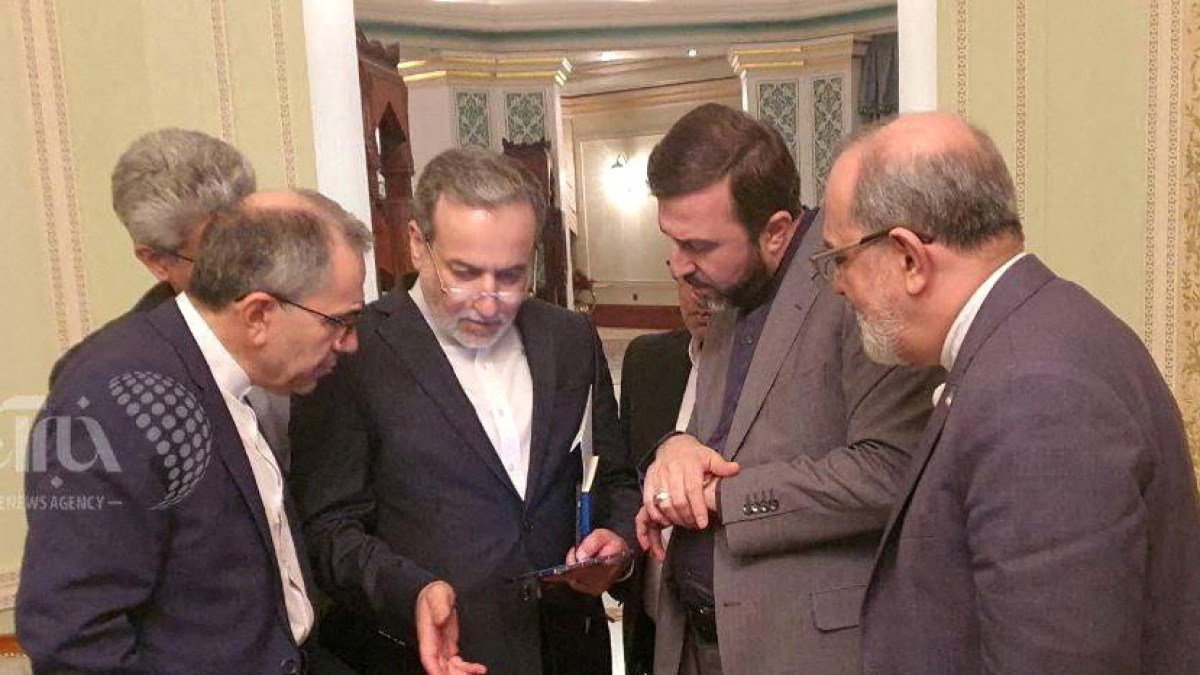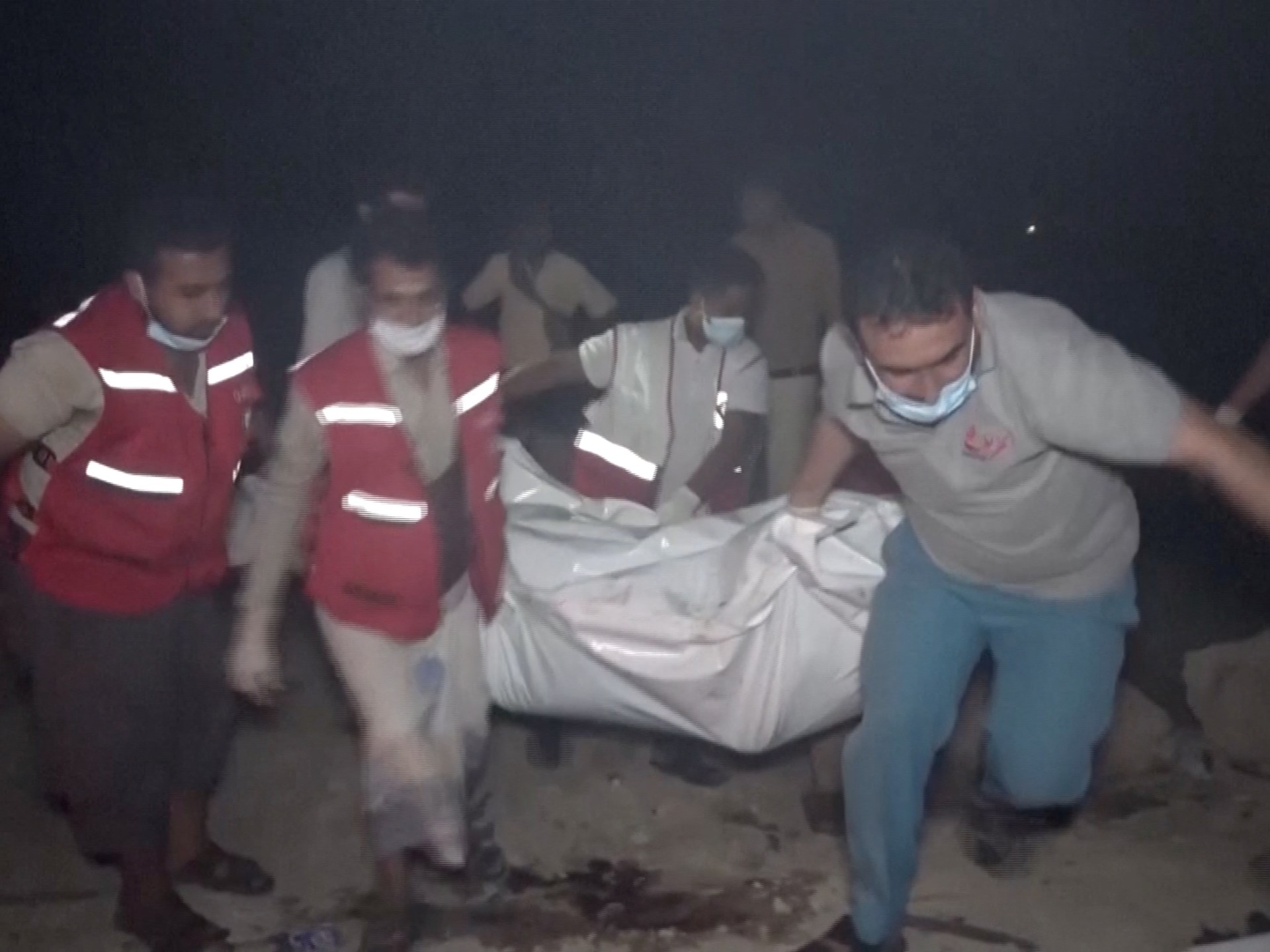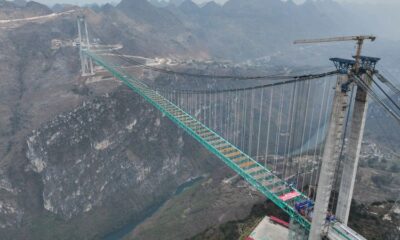Middle East
What to expect as Iran and US head for more nuclear talks in Oman | Politics News

Tehran, Iran – Iran and the United States are expected to hold more nuclear negotiations mediated by Oman amid efforts to shape an agreement to avoid the US attacking Iran.
The Iranian delegation will arrive in Muscat on Friday evening in advance of political and, for the first time, technical talks on Saturday.
Let’s take a look at what we can expect, as well as all the latest developments and context.
Who’s at the talks?
Like the two previous rounds of talks in Italy and Oman, Iranian Foreign Minister Abbas Araghchi and White House special envoy Steve Witkoff will lead the delegations.
But the experts leading the technical talks are also crucial, as they will iron out the details and wording of any agreement.
For Tehran, Araghchi’s political deputy, Majid Takht-Ravanchi, and deputy for legal and international affairs, Kazem Gharibabadi, are heading the expert-level delegation.
Takht-Ravanchi is a Western-educated diplomat who led Iran’s mission to the United Nations and was ambassador to Switzerland and Liechtenstein.
Gharibabadi led Iran’s representative office to international organisations in Vienna and represented the Iranian judiciary internationally.
He was also involved in indirect nuclear negotiations between the administrations of late Iranian President Ebrahim Raisi and former US President Joe Biden.

The chief technical expert whom US President Donald Trump selected is Michael
Anton, the newly appointed director of policy planning at the US Department of State.
Anton was a speechwriter for New York City Mayor Rudy Giuliani and National Security Adviser Condoleezza Rice during the George W Bush administration.
He also held managerial roles in the private sector, including at Citigroup and BlackRock investment firms. During the first Trump administration, he served on the National Security Council to shape government messaging.
Anton’s work may be eased by the fact that he has not yet publicly adopted a stance on Iran’s nuclear programme.
What will they discuss?
Iran has emphasised it will not discuss its defence capabilities or regional influence, but is ready for an agreement that ensures it won’t build a nuclear bomb, which it has repeatedly stated it doesn’t want.
The technical talks aim to set the steps Tehran would take to curb its nuclear programme, and how Washington and Europe would lift their devastating sanctions, which have continued despite the US calling the talks with Iran “constructive”.
Iran, for its part, wants to lift at least part of the comprehensive sanctions against its oil, banking and related industries, some of which are imposed under multiple designations.
A deal could unfreeze some of Iran’s billions of dollars of export revenue that remain blocked in foreign banks by sanctions.
Negotiators may also attempt to nail down waivers, orders to allow Iran to sell oil or access the global payments system.
Iranian officials like President Masoud Pezeshkian have gone a step further, saying Iran would even welcome direct, large-scale investment by US companies in its market, which is brimming with financial opportunity.
On the agenda will also be a cap on Iran’s uranium enrichment, which is now at up to 60 percent, a short step from the 90 percent required for a bomb.
Under the terms of an earlier nuclear agreement with world powers (the JCPOA), Iran had committed to a cap of 3.67 percent enrichment, sufficient for civilian uses like power generation.
However, when Trump unilaterally abandoned the JCPOA in 2018 and slapped punishing sanctions on Iran, Tehran started enriching at much higher levels and using more advanced reactors than those specified in the JCPOA.
The International Atomic Energy Agency, the UN watchdog that will again monitor Iran’s commitments, is expected to send a team to Iran in the next few days for talks.

Will there be an agreement soon?
While likely to advance the positive atmosphere surrounding the talks, Saturday’s meetings are only a step among many required for any deal.
But time is of the essence, especially in the months leading up to an October deadline, when the 2015 nuclear deal’s “snapback” mechanism expires.
It allows any of the signatories to initiate a process to reinstate all UN sanctions on Iran in the case of significant noncompliance, like enriching uranium at levels higher than 3.67 percent. Iran wants to avoid snapback.
Iran’s Araghchi has visited China and Russia to coordinate a position, while accusing Israel of “undermining” the negotiations.
Witkoff was also in Moscow on Friday to discuss the talks with Russian President Vladimir Putin.
Araghchi has said he is ready to visit Paris, Berlin and London for direct talks with the three European JCPOA signatories.
“I was ready to do it before Iran commenced its indirect dialogue with the U.S., but the E3 opted out,” he wrote on X.
Meanwhile, Iran’s Supreme Leader Ayatollah Ali Khamenei signalled to his followers, using religious symbolism, this week, that they must not refuse a deal with the US.
He recounted how Jafar al-Sadiq, the sixth imam revered in Shia Islam, made a deal with his enemy some 1,300 years ago, adding that any deal would not indicate the “dominance of disbelief and deceit” over Muslims.
Middle East
Israel bombs Beirut; President Aoun calls for international pressure | News

Israel has violated the November ceasefire multiple times, attacking the Lebanese capital and the south.
Israel has struck Beirut’s southern suburbs after issuing an evacuation warning, the third Israeli strike on the Lebanese capital since a ceasefire took effect in late November.
A huge plume of smoke rose over the area after the strike on Sunday. There was no immediate word on casualties.
Lebanese President Joseph Aoun condemned the air strike and called for France and the United States, guarantors of the November 27 ceasefire between Israel and Hezbollah, to compel Israel to halt its attacks. Israel has violated that truce multiple times in recent months and weeks with attacks on the capital and across southern Lebanon.
Aoun said Israel is undermining stability in Lebanon and escalating tensions, posing “real dangers to the security” of the region.
The Israeli military said the attack on Beirut destroyed “an infrastructure where precision missiles” were stored by Hezbollah. It did not provide proof for its claim. No secondary explosions were reported after the Israeli attack.
Local platforms have published footage filmed in the immediate aftermath of the bombardment. This video has been verified by Al Jazeera:
بالفيديو: دخان كثيف يتصاعد من “الهنغار” المُستهدف في منطقة الحدث بالضاحية الجنوبية pic.twitter.com/nLle4DuG8I
— هنا لبنان (@thisislebnews) April 27, 2025
‘Damage widespread’
Al Jazeera’s Zeina Khodr, reporting in Beirut, said: “We were able a short while ago to reach the site that was targeted, but there was a lot of chaos, and we were told to leave.”
“The damage was widespread, also affecting nearby buildings. Windows were blown out, glass was on the floor, cars were damaged,” she added.
“This strike did come with a warning but without any provocation,” Khodr said. “This is not the first time that Beirut’s southern suburb has been hit since Israel and Hezbollah agreed to that ceasefire back in November, but this time, there was no rocket fire. So people here are concerned that Israel is rewriting the rules of engagement, saying that there are no red lines any longer and that this could be the beginning of an escalation.”
‘Pinging the system’ for intelligence
Elias Hanna, a retired Lebanese army general, told Al Jazeera the Israeli strike on Beirut – and the warning that preceded it – may have been aimed at gathering intelligence on Hezbollah.
Hanna said such an operation is known as “pinging the system”.
“If you have information on certain individuals or facilities, you send the warning, and you wait to see how these officials or leaders will respond,” he said. “Will they move from one place to another?”
Hanna added that the operation could confirm or dismiss certain information, which would be a “win-win” scenario for intelligence gathering.
During the yearlong war, Israeli drones and fighter jets regularly bombarded the southern suburbs of Beirut, where Hezbollah has widespread influence and support. Israel assassinated several of Hezbollah’s top leaders there, including Secretary-General Hassan Nasrallah.
The US has pressured Lebanon to disarm Hezbollah, but Aoun has warned this is a “delicate” matter that must be handled in a way that preserves peace in the religiously diverse country. Hezbollah, which views itself as the resistance to Israel, says it will not disarm.
Middle East
‘A tree is worth more’: The civilians who fled Zamzam as the RSF attacked | Sudan war News

One dawn in mid-April, the very air in Zamzam Camp seemed to shatter.
The paramilitary Rapid Support Forces (RSF) stormed the displacement camp in North Darfur, launching a brutal three-day assault that killed hundreds of people and left countless others scattered, injured or missing.
Gunfire echoed through makeshift shelters. Families ran in every direction. Many never made it out.
On April 13, the RSF claimed to have captured what it called the “Zamzam military base”. But those living there said no such thing existed, that Zamzam was simply where displaced families clung to life.
The takeover followed five months of suffocating siege. Roads and aid were blocked, and survival left to chance.
A shelter turned into a battlefield
Zamzam, 15km (9.3 miles) south of el-Fasher, the capital of North Darfur state, has been a refuge for civilians displaced by the Darfur conflict since the 2000s.
At the time, rights groups said the violence was ethnic cleansing and possibly genocide by state-backed “Arab” nomadic militias against mainly “non-Arab” sedentary communities.
About 300,000 people have ended up in Zamzam since 2003. The number swelled to well above 500,000 due to violence that has spread across the western region of Darfur since Sudan’s civil war erupted between the RSF and Sudanese military in April 2023.
In the past year, Zamzam has transformed from a place of refuge into a killing field.
Aid blockades, repeated RSF attacks and famine have stripped the camp of food, medicine and basic security.
The military and its allied forces managed to repel dozens of RSF assaults, but the troops soon returned to el-Fasher, their last stronghold, leaving the camp exposed once again.
Dr Ibrahim Abdallah, director general of health in North Darfur, told Al Jazeera over the phone that the death toll likely exceeds 500.
“Due to the Sudanese tradition of burying the dead immediately to honour them, it’s hard to keep track,” he said. “And with Zamzam located many kilometres from el-Fasher, transporting the bodies for documentation is nearly impossible.”

Fleeing one nightmare, only to find another
A young woman, who asked to remain anonymous for her safety, spoke to Al Jazeera from el-Fasher, to which she, her husband and her two younger brothers fled.
She says fear has followed them and told Al Jazeera part of the story of how she came to flee Zamzam.
In January 2024, she had been living with her husband in Wadi Shadra in North Darfur with her 15-year-old and 9-year-old brothers, who moved in with them after her parents died.
The RSF attacked Wadi Shadra, and the blended family fled to Zamzam, where they thought they had escaped the worst.
But then, just over a year later, another attack.
“It started at dawn on Friday [April 11],” she said. “A large force stormed the camp from the south, towards one of the markets. Fire broke out in every direction as gunfire rang out.”
They hid in trenches for a full day without food or water as a shell shattered their home and another struck a neighbour’s, killing three children.
Then they ran, fleeing to the nearby village of Saluma.
“But the RSF followed us there too. They torched the houses and shouted that we must go to Tawila immediately,” she said.
Their donkey had been killed and their cart destroyed, so they had no other option than to walk for hours to el-Fasher under a blazing sun.
“I lost my aunt and two of her children that day. We still don’t know what happened to her other three children.”
Trapped away from his family: Nasr’s story
Nasr, who asked to be identified by just one name, fled Zalingei, the capital of Central Darfur, with his family in October 2023 after RSF fighters took the city. His father, a community leader, had twice been threatened by the late RSF commander Ali Yakoub.
The family passed through Sarf Omra, in Kabkabiya, North Darfur, before arriving in Zamzam on November 22, 2023.
He arrived with his wife, two children – a spirited three-year-old daughter and a toddler son just over one and a half years old – as well as his parents and several siblings.

Together, they built a fragile shelter and tried to start over. Each morning, Nasr made the 30km (18.6-mile) round trip to el-Fasher to work in the livestock market and bring home food.
Then, in February, RSF fighters stormed the camp. Roads were closed. The siege tightened.
Nasr never made it back to his family.
His wife, children, elderly parents and younger siblings remained behind, caught in the chaos.
“A tree is more valuable in this world than we are. We lost all our human value in this world,” Nasr said.
He rejected the RSF’s claim of a “military base” in Zamzam as a cruel distortion. He recalled how people dug trenches to shield themselves from relentless bombardment.
He later saw a video of detained men, among them his uncle. One of the RSF leaders delivered a clear message to them: “Join the RSF or suffer.”
Nasr has spent agonising days in el-Fasher, waiting by roadsides, clinging to hope that someone from Zamzam might bring word of his family.
He asks about them in whispers, his voice heavy with fear.
At last, he heard they had fled towards Tawila, but he adds: “Until now, I don’t know if they reached Tawila or not.”
‘More than 28 attacks in five months’
Mohamed Khamis, spokesperson for the displaced in Zamzam, is now a patient in a hospital in el-Fasher.
He was shot in the thigh during the RSF’s assault.
The camp had endured more than 28 attacks in five months, he told Al Jazeera, but none matched the scale and violence of the latest.
“They stormed in at dawn with heavy weaponry,” he said.
In the early moments of the attack, they reportedly targeted a Relief International Clinic, and Khamis rushed to check on friends, but he never made it.
“I was intercepted by an armoured RSF vehicle,” he said.
The RSF fighters shot him and left him on the ground to bleed out, but he was rescued by residents and smuggled to safety.

“Many young men were executed during the rampage,” he said.
He continued, trying to describe what happened.
More than 12 women and girls were confirmed to have been abducted by RSF fighters while fleeing. Their whereabouts remain unknown, as well as what they may be suffering.
There are reports of women and girls being raped, “no fewer than 200 cases” according to Khamis, although he is certain many more have gone unreported.
No safe haven left
In the minds of those displaced for the second or third time, the idea of safety is gone.
The RSF narrative is that it is fighting “military elements” in Zamzam, but testimonies like Nasr’s and Khamis’s refute that.
“There was nothing there but people trying to survive,” Nasr said again, as if repetition might finally end the world’s indifference.
But the silence remains.
Survivors are left with ashes, unanswered questions and a single haunting truth: “We lost our human value in this world.”
Middle East
In Yemen, we comfort ourselves, thinking: It is not as bad as Gaza | Opinions

In the first week of April, the United States carried out air raids across Yemen. One strike hit just a street away from my family home in a quiet neighbourhood of the port city of Hodeidah. As is always the case with sudden attacks, everything happened quickly: the sound of the explosion, the house shaking, the children screaming and the struggle to comprehend what is happening.
Ten years have passed since the start of the war in Yemen. The air strikes of the coalition have stopped, but Israeli and American bombing have taken over. It now feels as if we are in a video game and we have just gone up a level to face another monster – far more ferocious than the previous one.
I thought living through so many attacks would have helped us conquer fear. But I was wrong. The sound of this month’s blast sent my son, Tamim, running into my arms. We were all scared, but what I saw in my little boy’s eyes was pure terror. He does not recall the whole war. He is only six years old and is still discovering the world, which on that day in early April, showed its ugly face to him.
He put his hands on the sides of my face, his little fingers trembling. He then whispered a difficult question: “Is this an earthquake?”
While everyone at home was busy trying to figure out where the bomb had fallen, I was searching in my mind for an answer to my child’s question.
I smiled to try to calm him down, still thinking of an answer. Should I lie and tell him yes? Or should I explain the reality of war, the fighter jet and the missile? Should I tell him the truth: that the world has abandoned us to a fate of constant, deadly bombardment?
I told him it wasn’t an earthquake, that it was an airplane that had passed by and launched a missile. I decided not to share with him the gruesome details of what a missile does once it lands in civilian neighbourhoods. I did not want to distort for him his love for airplanes. Flying above the clouds has been Tamim’s dream, and he has been saving his meagre pocket money to realise it one day.
Mentioning the airplane eased his fear and got him thinking about his flying machines. What truly worries me is that one day my son will come to realise what hearing the sound of a plane really means in Yemen.
We soon found out what the target of the air strike was: a building next to which was a house I had visited before. It was the home of the sister of a close friend of mine. I was overcome by an anxious premonition and decided to call my friend who was living in a different city.
I couldn’t bring myself to tell her at the start of our conversation what had happened. She sounded so happy on the phone. But she understood from my shaky voice that something was wrong. Unfortunately, I had to become the bearer of the horrific news.
We later learned that her nephew, an 18-year-old named Mohamed, had been killed by the explosion. His biggest dream had been to receive a scholarship to study. He had returned home just an hour before the attack after attending classes at an English language institute.
Mohamed perhaps had never imagined that the scholarship he would receive would be for another world and that it required no qualifications other than being a Yemeni.
He became a number cited on the news a few times before being forgotten.
Two weeks later, as I began to write these lines, funerals were held for 80 people who were killed by a bombardment of the Ras Isa port. The United States saw the port as part of the supply chain of fuel for the group Ansar Allah, but it decided not to take into account the civilian workers employed there.
Most of them returned to their families as charred bodies. Some did not return at all – like 26-year-old Abdel Fattah. His body could not be found. His colleagues who survived said he was at the location where one of the missiles fell. When they searched for him, there was no trace – no phone, no shoes, no hair, not even a piece of skin. Abdel Fattah was pulverised.
This is the worst nightmare for a family: having no body of a lost loved one to embrace and mourn.
More days passed. More air strikes hit Hodeidah. I cannot describe how heavy the moments are after a bombardment ends. Who will be the next victim? Where is death lurking? People go into a frenzy calling loved ones. A simple decision to switch off one’s phone can send a family into panic.
And yet, amid all the death and destruction, Yemenis still find a way to show kindness and resilience. I often hear people say that what we are suffering cannot compare to what is happening in Gaza. My fellow Yemenis see pain as a matter of comparison, not a matter of justice – as if the pain must compete against another to be recognised.
I often ask myself: Do we suffer from collective depression? Or do we possess a supernatural power that allows us to adapt to this abhorrent resignation?
Whether the air strikes increase or they stop, there is nothing that can calm our hearts down. This grief accumulates in our bodies and makes us dread what is to come.
Yemenis no longer pay attention to the rest of the world, which has reduced us to mere numbers in international agency reports and news broadcasts.
There is nothing else we can do than write. Perhaps writing can keep alive the memory of Mohamed, Abdel Fattah and hundreds of thousands of other Yemenis. Perhaps one day, our writing can help stop the missiles.
The views expressed in this article are the author’s own and do not necessarily reflect Al Jazeera’s editorial stance.
-

 Education1 day ago
Education1 day agoHavard students and faculty face the fallout from a showdown with Trump
-

 Sports1 day ago
Sports1 day agoBoston Celtics criticize Orlando Magic’s physicality after another injury in Game 3 loss
-

 Europe1 day ago
Europe1 day agoRecord-breakers, from the world’s tallest bridge to the world’s smallest park
-

 Sports1 day ago
Sports1 day agoPittsburgh Steelers’ first-round draft pick loses mother hours after being selected
-

 Sports1 day ago
Sports1 day agoTrendlines: Everything about the NFL draft is trending up
-

 Sports1 day ago
Sports1 day agoLondon Marathon: Why more people than ever before are running marathons
-

 Conflict Zones1 day ago
Conflict Zones1 day agoAt least 11 killed in suspected RSF drone attack on Sudan displacement camp | Sudan war News
-

 Europe1 day ago
Europe1 day agoRussia claims recapture of Kursk border region but Ukraine says fighting continues




